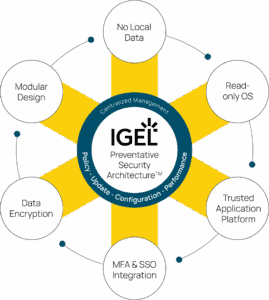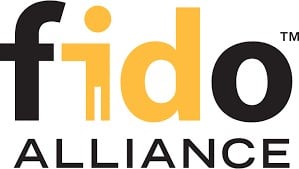IGEL Blog

From Reactive to Resilient – Inside the Preventative Security Architecture™
In Part 1 of this series, we explored the Preventative Security Model™ (PSM) — IGEL’s strategic framework for aligning endpoint, security, and application strategies across the modern enterprise. But strategy without execution is just ambition.
That’s where IGEL’s Preventative Security Architecture comes in.
Beyond “Monitor, Detect, Remediate”
Traditional endpoints were designed for general-purpose use—built to accommodate consumers, gamers, and enterprises alike—not to meet the specific demands of secure enterprise environments. Today’s standard endpoint stack is designed to detect, monitor, and remediate threats — assuming that compromise is inevitable.
IGEL turns that assumption on its head.
The Preventative Security Architecture takes a fundamentally different approach — one that prioritizes designing out risk through immutability, minimalism, and policy enforcement at every layer of the endpoint experience.
This isn’t just a better way to secure IGEL OS. It’s a blueprint for customers to establish their own preventative security architecture — one that aligns with their Zero Trust journey, compliance goals, and operational realities.

The Core Principles of Preventative Security Architecture
The architecture rests on five pillars:
- Immutable OS State: IGEL OS is locked down at the system level. Unauthorized changes simply can’t persist — or even run.
- Zero Local Data: No data lives on the endpoint. IGEL endpoints are stateless — there’s nothing to exfiltrate or encrypt.
- Secure Boot and Trusted Application Platform: Boot-time chain-of-trust backed by UEFI and TPM ensures only validated components load.
- Minimal Attack Surface: A 2GB core footprint, with optional modules added only as needed — reducing vulnerability density.
- Centralized, Granular Policy Control via UMS: Over 9,000 configurable settings. Enforce consistency without needing endpoint agents.
This is what “secure by design” looks like in practice — not theoretical protections, but tangible barriers that eliminate the opportunity for exploitation.
Your Preventative Security Architecture
This isn’t about locking customers into IGEL’s view of security. It’s about giving them a foundation to build their own preventative strategy — a Preventative Security Architecture that scales with their policies, their risks, and their compliance mandates.
Whether it’s:
- Rolling out a Zero Trust initiative,
- Aligning SOC frameworks such as NIST CSF or ISO 27001,
- Responding to rising ransomware threats
- Transitioning from Windows to a hybrid DaaS model,
IGEL’s architecture supports that journey. Not by dictating it — but by enabling it.
IGEL Ready – The Ecosystem That Powers It
Every strong architecture needs strong integrations. These are provided by the IGEL Ready program.
Through our expansive partner ecosystem, organizations can integrate leading Zero Trust, SSE/SASE, IAM, UEM and compliance solutions into the IGEL experience — natively. Partners like:
- Zscaler, Palo Alto, Netskope (for secure access)
- Microsoft Entra ID, Workspace ONE Access, Imprivata and Okta (for identity and conditional access)
- Island and Microsoft Edge (for browser-based workspaces)
- HP, LG, Lenovo (for secure and sustainable hardware endpoints)
These aren’t bolt-ons. They’re validated. Secure. Orchestrated. And ready to scale.
The Payoff – Simpler, Safer, Resilient
By adopting a preventative security architecture, enterprises can:
- Reduce risk – by removing attack vectors before they can be exploited.
- Reduce cost – by eliminating layers of endpoint agents and streamlining patch cycles.
- Reduce noise – by minimizing alerts and avoiding alert fatigue.
- Improve compliance – through posture-based access and centralized controls.
This is the architecture for the next generation of secure work — and it’s not just IGEL’s. It’s yours.
In Part 3, we’ll tie it all together with the Adaptive Secure Desktop™ — a dynamic, context-aware workspace delivery model that puts this architecture into motion for every user, device, and role.


